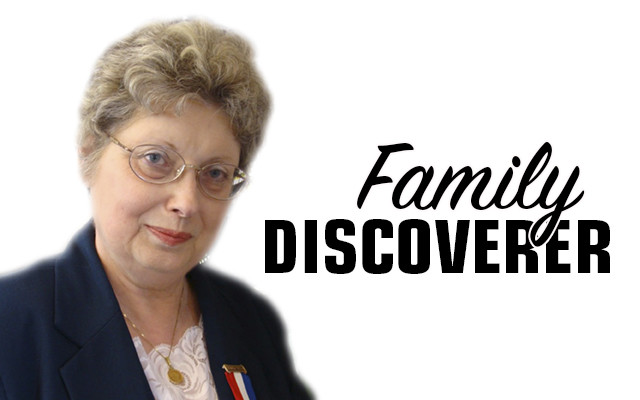
Tips on finding female ancestors
Finding the maiden name of a female ancestor can be a challenge. Men’s names were recorded in town vital records but the wife was usually listed by her given name only.
Here’s the definition of terms I’m using: “Given” name is the first name; maiden name was usually the woman’s father’s last or surname; the woman’s married surname was that of the husband. When searching for an ancestor’s maiden name your success often depends on the time period involved. The census may help but unless a woman was a widow or head of a household, her name didn’t appear in our censuses until 1850. Widows were usually listed as “Widow Carter.” So, how do you go about locating these ladies hidden by history? In this and the following column I’ll try to give you some pointers.
In the U.S. Census you’ll find a wife’s name enumerated beneath her husband’s, showing her first name and usually an initial, such as Mary C. While C. could be a middle initial it is more often a clue to her maiden name. Assuming the couple didn’t move into the town already married, start your search by combing the neighborhood for surnames beginning with C. Check earlier censuses to see if there is a daughter Mary of the correct age.
Also, note all living in the couple’s household – is there a mother, brother, or sister-in-law listed. Note their surname because it’s most likely the wife’s family.
You’re fortunate if the lady you’re seeking has a less common first name such as Sophronia. Let’s suppose you’ve found a possible Sophronia and her family. Now check to see if you can find a will or a deed settling her father’s estate. You may find an entry that states the name of the daughter and her husband among the heirs.
Another familiar situation in remote areas was that brothers often married women who came from the same family. If you’ve exhausted conventional sources, try searching the family tree. Check the marriages of your male ancestor’s brothers and trace their marriages. Chances are you might find connections. I’m researching a line where two brothers married two sisters and another brother married a first cousin of the sisters. This happened more often than realized and unless there was a genetic disposition to certain diseases caused no problems. We all know the jokes about shopping for a wife at family reunions, but it happened, and rare is the tree without a cousin marriage of one degree or the other.
Should your ancestor have moved to your town complete with a family, don’t despair. Here in Maine until the late 19th century, most immigrants came from our sister New England states. These states kept detailed records from their earliest settlements so don’t be daunted if you learn your ancestor came from Duxbury, Massachusetts. The Massachusetts records are really good. Odds are you’ll find information on your ancestor’s marriage.
In my next column I’ll have a few more tips in seeking the unknown maiden names of female ancestors.
Nancy Battick is a Dover-Foxcroft native who has researched genealogy for over 30 years. She is past president of the Maine Genealogical Society, author of several genealogical articles and co-transcribed the Vital Records of Dover-Foxcroft. Nancy holds an MA in History from UMaine and lives in Dover-Foxcroft with her husband, Jack, another avid genealogist. You can contact Nancy at nbattick@roadrunner.com.